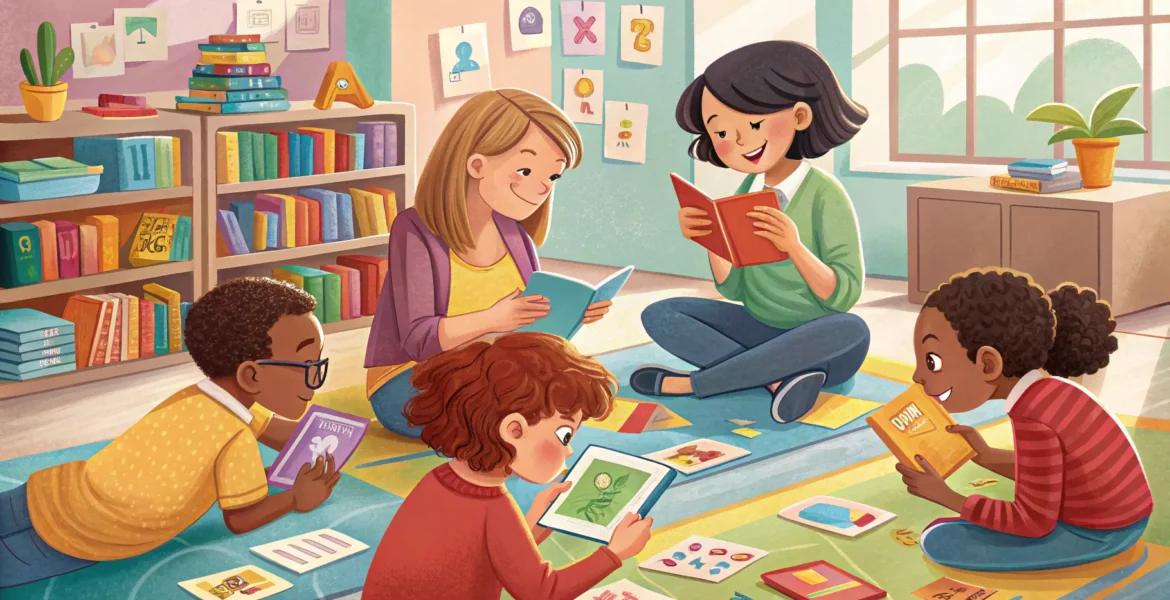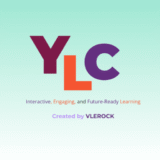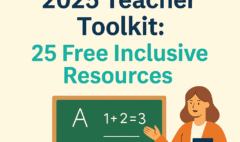Science of Reading Pedagogy and Young Learners Curriculum: Maximizing Student Success Through Evidence-Based Instruction

Science of Reading Pedagogy and Young Learners Curriculum: Maximizing Student Success Through Evidence-Based Instruction
Science of Reading Pedagogy and Young Learners Curriculum: Maximizing Student Success Through Evidence-Based Instruction
Unlocking the power of effective reading instruction is crucial for the success of young learners. The thoughtfully designed Young Learners Curriculum, developed with insights from the science of reading pedagogy, offers a transformative approach for educators and parents alike. This curriculum integrates proven educational theories such as Bloom’s Taxonomy and project-based learning to address common challenges in early education, ensuring every student not only learns but thrives.
Addressing Key Challenges in Early Literacy Education
Many traditional curriculums struggle with a one-size-fits-all approach, leading to disengagement and leaving struggling readers behind—an issue exacerbated by recent disruptions like the COVID-19 pandemic. The Young Learners Curriculum targets these pain points by providing individualized, explicit instruction tailored to children aged 6 to 12 (grades 1-5) with language proficiency levels from advanced beginner (A1) to intermediate (B1).
Grounded in the science of reading pedagogy, which emphasizes structured literacy, this curriculum ensures all students build a strong foundation in essential reading skills. It incorporates phonics-based activities, gamified vocabulary exercises, fluency drills, and scaffolded comprehension tasks to engage learners actively and support their progress.
Lesson Structure Designed for Engagement and Skill Building
Each lesson is carefully structured to foster interaction, collaboration, and mastery. The progression typically includes:
- Introduction of the Lesson Topic: Using interactive flashcards and word clouds to stimulate reading and prediction skills.
- Engagement Activities: Timed exercises that build readiness for assessments and encourage focused participation.
- Listening and Speaking Practice: Group work, pair work, and co-creating stories with peers or teachers enhance language use in context.
- Roleplay and Project-Based Learning: STEAM projects, creative writing, drawing, and acting out scenarios deepen understanding and retention.
- Assessment and Feedback: Self-assessment checklists, mastery quizzes, and ongoing teacher and parental feedback support continuous improvement.
This diverse mix of activities caters to different learning styles—whether visual, auditory, or kinesthetic—ensuring that every learner can access and retain information effectively.
Integrating Bloom’s Taxonomy for Deeper Learning
The curriculum aligns seamlessly with Bloom’s Taxonomy, moving students through levels of cognitive development from remembering to creating. This progression ensures learners develop higher-order thinking skills vital for academic success.
- Remembering: Activities like vocabulary flashcards and word clouds help students recall basic concepts.
- Understanding: Listening exercises, sentence creation, and roleplaying build comprehension.
- Applying: Students apply vocabulary through drawing, storytelling, and acting out scenes.
- Analyzing: Guided questions, compare and contrast tasks, and story predictions encourage critical thinking.
- Evaluating: Self-assessment, project reviews, and feedback from teachers and parents promote reflection and judgment.
- Creating: Culminating STEAM projects, creative writing, and final projects empower students to synthesize and innovate.
Supplemental materials such as PDF workbooks, flashcards, storybooks, songs, and videos reinforce these stages, offering multiple modalities for learners to engage with the content.
Project-Based Learning: Empowering Creativity and Collaboration
Project-based learning is a cornerstone of this curriculum, fostering active participation and real-world application of knowledge. Students are not passive recipients but creators who co-design stories, roleplay, and engage in STEAM projects that integrate vocabulary and reading skills.
This approach enhances long-term retention and critical thinking by:
- Encouraging problem-solving and creativity.
- Promoting collaboration through group work and peer interaction.
- Connecting learning to tangible, meaningful tasks.
Differentiated Instruction for Diverse Learners
Recognizing that each child learns differently, the curriculum offers differentiated instruction tailored to visual, auditory, and kinesthetic learners. From illustrated flashcards and interactive songs to action-based vocabulary games, students have multiple pathways to grasp and retain concepts.
This flexible design combats the pitfalls of the one-size-fits-all model and supports mastery learning, where students fully understand each concept before moving forward. Scaffolded exercises, peer reviews, and self-assessments ensure no learner is left behind.
Continuous Improvement Through Feedback Loops
A vital component of the curriculum is its ongoing feedback mechanism involving teachers, parents, and students. After every lesson, data is gathered to evaluate effectiveness and identify areas for enhancement. This feedback loop enables data-driven updates and refinements, ensuring the curriculum remains responsive to the evolving needs of diverse learners.
Conclusion: Cultivating Lifelong Readers and Creative Thinkers
The Young Learners Curriculum is a holistic, evidence-based program that blends the science of reading pedagogy, Bloom’s Taxonomy, and project-based learning to transform early literacy education. By fostering creativity, critical thinking, and mastery, it creates an environment where every student can flourish.
With its engaging materials, differentiated instruction, and robust feedback system, this curriculum is poised to make a lasting impact on young learners’ educational journeys. Educators and parents looking to inspire confident, creative, and capable readers will find this approach invaluable.
For those interested, a free tier offering a glimpse into the curriculum is available, complete with interactive stories, printable resources, and STEAM activities designed to make learning both modern and fun.
By embracing this innovative curriculum, we are not just teaching children to read—we are empowering them to become lifelong learners and thinkers.
👩🏫 Want More Than Just Tips?
If you liked this strategy, you’ll love the Young Learners Curriculum — a full subscription of:
- 📘 240+ story-based English lessons in our Interactive Stories Curriculum and growing we also offer Over 240 lessons in our Foundation Curriculum
- 🧩 Pre-planned reading, writing, grammar, and STEAM units
- 🎮 Interactive games, movement breaks & printable packs
- 🧰 Teacher-ready guides so you can spend more time teaching and less time planning
🎁 Start a free forever sampler curriculum today !



